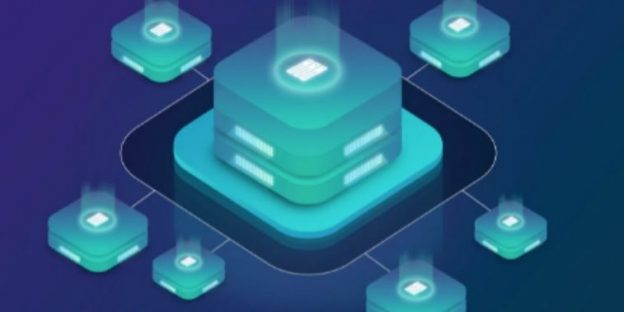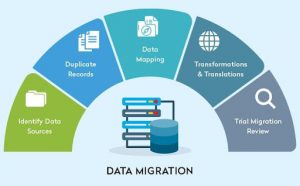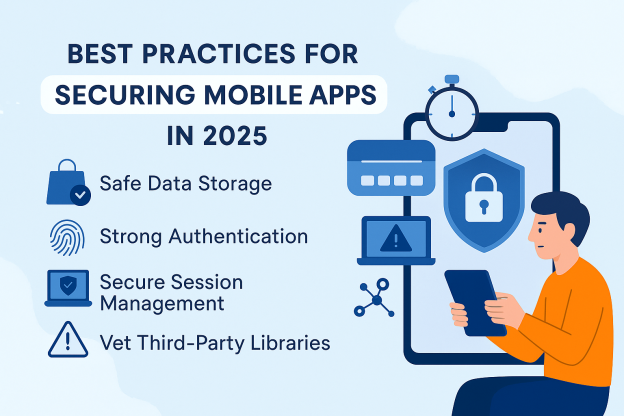Understanding Data Migration: Best Strategies and Practices

Businesses that grow by development and improvement do not die, said Henry Ford. And that is why successful businesses always find inventive ways to stay in the market. As technology is taking advanced steps day by day there is so much strain among the businesses to enhance the productivity, efficiency, and scalability of your business.
Just like that migration of data and database migration is one the breakthroughs that have been very helpful to the businesses since its inception. Data Migration is a one-time process of transferring internal data from one storage system to another. This process also includes preparing, extracting, and if necessary, transforming the data.
You may be thinking it’s the same as data replication or data integration and what’s a new invention in data migration. Well, each process in data migration is different. On the other hand data replication is the periodic copying of data from a data source from one platform to another. And data integration combines data from disparate sources in a data warehouse destination or analysis tool.
Data migration is crucial because it is a necessary component to upgrade your services and storage hardware, or adding data-intensive applications like databases, data warehouses and data leaks, and other large-scale virtualization projects. But it is also important to understand how to perform seamless migration for any application. Let us find out how.
Serverless architecture is gradually becoming a broadly accepted approach for App development. Going serverless does not mean there is no involvement of the server. It’s just that you do not have to own a whole lot of servers and maintain them. Know more about why serverless architecture is booming in the app development realm?
What is the Most Effective Database Migration Strategy?
Data migration offers huge and easy success to your migration project and that is why it is important to have complete knowledge of databases. It all starts with effective planning that gives results in the end with the post-migration services. To make data migration methods easier for you, we have come up with a comprehensive blog on data migration that contains information about data migration. Without further ado, let’s start.
What is Database Migration?
As the name implies and mentioned above, it is a transfer of data from one platform to a better platform. The data can be moved from physical storage to cloud-based storage to make it more accessible to everyone and scalable to increase efficiency. It is one of the reasons why data migration is so much in demand among the IT companies and businesses that use websites and mobile apps to run their business effectively.
However, in order to use the data migration effectively and its implementation. You need to overcome some obvious challenges that come along and are related to the identification of databases stored at various locations. For maximum help, it is crucial to follow the most effective database migration strategy for the success of your migration project. So, here are some of the important steps of the migration process.
1. Pre-Migration
The main aim of the pre-migration process is to comprehend the scope of data migration for an organization. It means that it is important for your database migration service provider to understand your needs and define a purview for further implementation.
After understanding your need for the database migration, the vendor must plan its resources and specify the total time for the project. This step also includes taking certain critical decisions like the change in the database migration tools, database migration testing, a framework for database migration also takes place.
Importance of Pre-Migration
The pre-migration process will give you a general concept of how the process is going to be carried out. You will also have an idea of how time-consuming the process is going to be for your database migration as you can shift your business focus accordingly.
Fundamentals of Web Application Architecture are crucial to learning about in these advanced times. The average internet user gets to see a specific page on his/her system through a series of interactions between various components of applications, user interfaces, middleware systems, databases, servers and the browser.
2. Analysis
Once we have figured out the scope of database migration we must move ahead with the analysis which is another crucial step. Usually, app development agencies learn more about your current database infrastructure and then create a comprehensive plan to move ahead with the new infrastructure. Apart from your current method database migration partner also consider the following scenarios:
-> Can it all be done from local infrastructure to the cloud?
-> Can it all be done for scalability?
-> Can database migration be done to reduce data complexity?
Once we have the answers to all these questions, we can find the best resources for defining norms and a clear set of rules. The analysis also includes the evaluation of data quality, and proper tools are also selected.
Importance of Analysis
The analysis is really important irrespective of what your project is. However, in database migration, this step can help in determining the complexity of the entire process. If any kind of complications is identified in this step, then planning is done at a whole new different level to find the perfect solution at the early stages of the process.
3. Strategizing
Irrespective of what you are planning to do, further strategizing can be really helpful. And once you have understood the database migration requirements for your company, strategizing is the next step on which you need to focus on. This step includes migration, determining your priorities, and scheduling every step to reduce the downtime during the real processing and transfer of data from one point to another.
When it comes to database migration then it is of two types: The first one is Big Bang, which is carried out in one go. The other one is Trickle migration, which is carried out in parts. The benefit of using the first one is that the entire process of database migration can be accomplished in a stipulated time frame. But with Tickle migration is performed in different phases, which means there are many opportunities for testing. Usually in this step, the methodology for database migration is decided.
Importance of Strategizing
Just like any other process with proper strategizing in data migration can help you determine the total time required for the database out. It will also help you determine the most efficient way to implement the process.
4. Migration
With Migration, we are moving ahead with the real process for which you all were waiting. Migration is the actual implementation of the database migration. Once we are aware of all the primary requirements, the development team from the app development company can use the various tools, frameworks, and other important scripts to migrate the data. There are many databases that you should choose for your business.
A database migration plan can be based on any tool like Flyway database migration. All you need to find is a tool that offers the convenience of offering the following basic commands: Migrate, Clean, Info, Validate, Undo, Baseline, Repair. Along with all of this, there is an AWS database migration service, which is convenient to use, reliable, minimal downtime, low cost and supports a widely used database.
Importance of Migration
Aforesaid, Migration is the actual process for which we were planning for so long as it moves data from one location to another. This method ensures that no data is being lost during the transaction and that it is secured heavily.
5. Post Migration
Once we have successfully performed the data migration, there are still some things that we need to look upon so they do not haunt us later. And that is why the top database migration service providing companies offer post-migration services to check whether the migration of the database has been carried out without any data loss or not. Post-migration consists of more than one step including validation, repair, testing, and handling of the process. These steps help in finding out whether the database is ready for the application or not.
Importance of Post Migration
It helps in identifying any kind of issues that might have been missed during the migration process. In this step, the database is prepared for real-life applications.
What are the Best Practices for Database Migration?
When it comes to migrating data, applications, and also equipment from one IT requirement into another is the right passage for organizations but also creates great anxiety in their minds. Often, many companies are still resistant to use database migration because of challenges like:
-> Confusion and Disorganization
-> Data loss if not done right
-> Compatibility issues
-> Hardware challenges
-> Time and cost of migration
-> Security and compliance adjustments
-> Choosing the right data storage options
-> Connecting old data with new applications
Because of all these lessons, it becomes crucial to follow the best practices for database management to have the utmost attention to detail. So, here are the best practices for database migration that you can follow for no issues while the process works.
Create a Backup Before Any Execution
A simple mobile phone would be sufficient for you. When you are transferring the data from your old mobile phone to the new mobile phone, you always first take a backup and then proceed with the execution. Just like that, it is safe to create a backup of your data before you proceed with the migration. And also when backup your data we suggest you store it in the tested backup storage system.
Preparing the Old Database
While transferring your data, we are sure that you do not want to carry any unnecessary data to the new database infrastructure. So it is a good idea to sort the relevant data from all the data. And while searching if you find any kind of junk then you can delete the non-required data.
Transferring your data from one platform to another is time-consuming so there is no point in transferring the unnecessary data to the new database. By sorting you will only transfer user data to save your time and effort.
Seek Advice From the Experts
Experts are there for a particular reason and there is no doubt that they can offer some good to your database. That is why it is advised to contact an app development agency when you are developing mobile apps for your business. Just like that expert database service provider can help in the creation as well as the execution of the database migration process. They can help you make decisions like whether you must opt for the database migration in Laravel or in CodeIgniter which is one of the difficult decisions you will face.
Since they are experts, it means they have performed the same multiple times for different sizes of companies. As a result, they can understand your database migration requirements in a better manner.
Prioritizing the Data
As mentioned earlier there are two types of methods used for database migration i.e. in parts and as a whole. Usually, the phase-based migration is considered more secure as it owns the testing carried out at various levels. Similarly, when you opt for database migration, it is appropriate to set a rank or priority for the data that you are transferring. This is the best way to transfer your prioritized data in the first load and then you can move ahead with the remaining low-risk data.
Tackling Common Challenges that Occur During Database Management
Database migration isn’t always as straightforward or simple as it may seem. There are a few challenges it offers which shouldn’t be overlooked for any reason otherwise you will also end up losing data and security. So, it becomes important to comprehensively understand these common challenges that surround the database migration practice.
1. Risk of Data Loss
The risk of data loss is probably the most common and the biggest concern of the companies who are planning to use data migration for the transfer. So, when the data is present in the old database then it sometimes gets lost from the new database without any external hand and this non-deliberate loss of data is known as data loss in database migration. Among the other processes, data loss is quite common and it can be a risk factor for your business. Because once you have lost some important data, you will need to find out the loss and that can be a huge financial commitment. So, we suggest instead of lowering your operational cost, get the best data migration service out there.
Solution – Reconciliation or Balancing can be a solution to identify data loss. There can be two folded reconciliation – Count and Key Financial Column. So, if you want to find out if there is any kind of data loss during the migration then you compare the records that are stored in the legacy database to the records in the new database.
And if there is any kind of mismatch then key financial reconciliation can help you look at a granular level of the problem so you can find out if there are any records missing and it will also tell you the reason for data loss.
2. Data Corruption
When the format of the stored data in the old system and the new system vary from each other in any way then it is known as data corruption. It is a quite common issue along with redundant data that companies encounter during database migration. Because data is the most important thing in this transfer, data corruption often gives rise to the challenge of data integrity concerns. If there is data corruption during the process then it will take the real purpose of database migration.
Solution – If you also want to track and constraint data corruption then you need to validate the data from each row and column from the old database to the new database. Moreover, there are three types of data validation methodologies that you are use to find out more about it:
Simple Data Validation – This is not the most effective way to identify the data corruption as it randomly picks up some of the records present in the old database and matches it with the new database and informs you if it finds anything different.
Subsets of Data Validation – A much better way for data validation the sample data validation method as it involves more data. It takes the subsets of records to identify the instances of data corruption instead of choosing a sample record.
Complete Data Validation – As the name suggests, it is the complete data validation method and the best method in the list to carry out migration testing. It is best because it compares every record in a bi-directional way that means the old database is compared to the new database and at the same time the new database is compared with the old database.
3. Semantics Risk
Semantic Risk can be identified when there is a difference in the unit of measurement between the old data and the new data, despite holding the same meaning, they are considered as different entities. So, basically, the data is not lost, it gets corrupted because the unit of measurement has altered to get the real values. At such a point database migration service often gets confused with a challenge and a data validation process is carried out.
Solution – In order to detect semantics risks a scope of test cases should be broadened to detect the semantic risks at the early stage in the migration lifecycle. The test cases should consist of instances with inconsistencies and incompatibilities between the old data and the migrated data. The testers from the top mobile app development company can also compare objects available in the source as well as in the target by simply looking at the screen.
4. Interference Risk
The risk to access a certain table from the database is known as interference risk. For instance, one of the individuals is striving to extract data from a table and freezes while the other individuals try to access the same data but are unable to do so. Interference risk doesn’t offer many problems but when your business is scalable and is trying to expand, it may lead to dissatisfaction among the stakeholders.
Solution – If your database is well organized in a better way then interference risk can be easily managed. It is important to manage such issues well-analyzed during the planning stage of database migration.
There are many new technologies in the market like VR and AI which are going to upscale the whole market but still in my mind, we think that it’s cloud computing that has the greatest potential of all them. We understand that this concept emerges from the late 90s but we are still yet to even scratch the surface so far as unlocking its true potential. We bought a comprehensive list of top 10 cloud computing service providers to make things right for you.
Conclusion
So, this is all about the database migration process. You can hire an experienced top mobile app development company to handle the migration process with the utmost ease. Look for the top developers who validate the data that has been stored in the new database to identify the instance of data loss and corruption.









Very informative blog. A great guide to understanding data migration strategies.
Thanks for sharing the comprehensive blog on data migration with the most effective database migration strategy & their best practices.
Please visit the website which offers the Top Data Engineering Services in USA and Across the Globe. We offer the best Data engineering, software development, AI ML, Digital Transformation, Data Science, Data Security, Cyber Security, Threat vulnerability assessment, Cloud computing & consulting services
I think this is so far the complete blog on Data Migration. I’ve been a regular reader of Vervelogic blogs, would like to give a shout-out to the quality and composition of your articles.